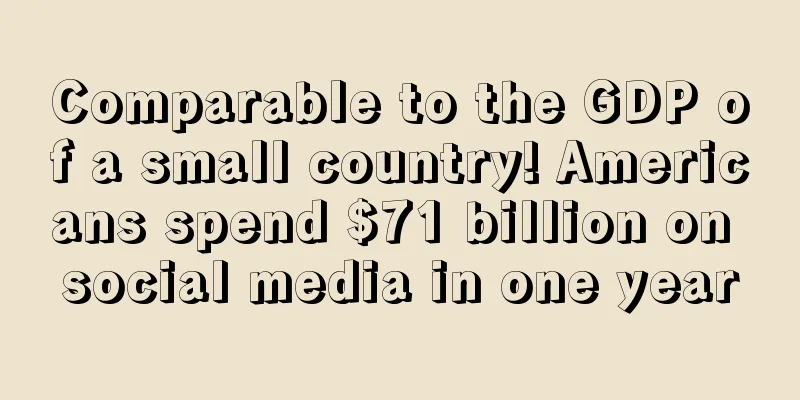The pet economy is booming, with e-commerce giants selling nearly $9 billion a year

|
In recent years, the pet economy has grown significantly. Affected by the epidemic, online pet consumption is becoming a long-term shopping trend for "poop scoopers", and the vitality of the pet economy is becoming more and more obvious. Data shows that the annual compound growth rate of the US pet e-commerce industry alone has reached 30%. In 2020, the size of the US pet market was close to 60 billion US dollars, and e-commerce platforms such as Petco and Chewy have developed in line with the trend.
Pet e-commerce giant Chewy has annual sales of nearly $9 billion
On March 29, Chewy , a well-known American pet e-commerce giant , released its fourth quarter and full-year results for 2021. Judging from the overall data, Chewy 's growth remained stable.
Chewy is an e-commerce platform that integrates multiple pet products, including pet food, snacks and medicines. The platform was founded in 2011 and is headquartered in Florida, USA. The platform has established partnerships with more than 2,000 brands in the pet industry, including Blue Buffalo, Nutro, Natural Balance and Tidy Cats. The business scope in the United States now covers 17 locations.
Data shows that since 2011, the platform has completed more than 100 million orders. The product prices, product categories and business philosophy are well received by consumers. A few years later, Chewy also launched its own brands such as Frisco and American Journey, and its reputation and ranking in the market continued to improve.
In addition, Chewy has also accelerated delivery by building its own warehouses, continuously expanding its product categories and partners, and developing personalized services, which has gradually expanded its market size. When Chewy successfully went public in June 2019, its financing amount reached US$1 billion.
According to Chewy 's 2021 financial report data, Chewy 's net sales in the fourth quarter of fiscal 2021 were US$2.39 billion, a year-on-year increase of 17% . Its gross profit margin was 25.4%, a year-on-year decrease of 170 basis points . Net loss reached US$63.6 million ( including US$15.8 million in equity compensation expenses ) , net profit margin decreased by 370 basis points year-on-year .
Looking at the full year of 2021 , annual net sales were $8.89 billion, up 24% year-on-year . The gross profit margin was not significantly affected by the fourth quarter, at 26.7%, up 120 basis points year-on-year , but the loss was greater than expected , reaching $73.8 million, including $85.3 million in equity compensation expenses , and the net profit margin increased by 50 basis points year-on-year .
Chewy CEO Sumit Singh said they are well positioned to achieve 24% net sales growth in 2021, a huge growth figure last year , which reflects the profitability durability of Chewy 's business and the pet category under the impact of the epidemic , and is a strong demonstration of Chewy's ability to execute in a rapidly changing macro environment .
In addition, Sumit Singh also said that net sales per active customer or NSPAC was $430, a new high for the company , which shows the strong customer loyalty and engagement on the platform . It is understood that Chewy has attracted many consumers by formulating relevant pet plans, holding relevant activities, and sending small surprises from time to time, and the repurchase rate has been improved.
For 2022 and beyond, the person in charge said that their innovation pipeline remains strong, their strategy will remain unchanged, and they remain optimistic about the growth opportunities ahead . Recently, Chewy also launched an Easter store on its official website, and the store offers large discounts on pet toys, daily necessities, snacks and other products.
In recent years, the pet economy has provided development opportunities for many e-commerce companies. As a giant in the vertical pet e-commerce industry in the United States, Chewy has always attracted much attention. However, Chewy also has many competitors in the US market.
Petco has nearly 25 million active users and annual revenue of $5.8 billion
As the second largest pet retailer in the United States and a strong competitor of Chewy, Petco , which is also listed , has been accelerating its development.
According to the official 2021 performance report, Petco's full-year net income increased by 18% to US$5.8 billion, and its net profit increased by US$190.9 million to US$164.4 million . The fourth quarter performance exceeded expectations, with net income increasing by 13% year-on-year to US$1.5 billion. During this period, there were approximately 800,000 new users, bringing the total number of active users to 24.1 million.
Petco was founded in 1965. The company is mainly positioned as a health and wellness company, committed to setting new standards for pet care and providing comprehensive health solutions for pets through products and services. Its main products include pet food, pet clothing, pet grooming, pet care and other aspects.
The sales model adopts a combination of offline and online models. With the rapid development of pet e-commerce, the platform is also in a state of rapid growth. Online, Petco provides comprehensive products and services through its official website and its mini-programs. With the help of offline stores, it can provide same-day pickup services for online orders. Offline, it operates more than 1,500 offline stores in the United States, Mexico and Puerto Rico , and continues to expand its veterinary hospital network.
In order to enhance its competitiveness in the market, Petco continues to strengthen its own brand construction, such as expanding veterinary care and other pet services, and pet products ranging from fashion clothing to fresh organic food. Recently, Petco also announced a partnership with JustFoodForDogs to enhance its leadership in the field of frozen premium food.
The sales growth on both platforms benefited from the potential of the U.S. pet market.
U.S. pet market: high demand, high consumption
Compared with China, which is still in its infancy, the U.S. pet industry has a long history of development, and consumption channels have begun to shift from traditional retail stores to pet e-commerce platforms, and the industry chain is quite mature. In addition, the U.S. pet market is also characterized by large scale, high product demand, high household penetration, and high per capita consumer expenditure . It is currently the largest pet market in the world.
The pandemic has further boosted the pet economy in the United States. According to data from the American Pet Products Association ( APPA), U.S. pet market consumer spending reached $103.6 billion in 2020, exceeding $100 billion for the first time . Moreover, in 2019, the U.S. was the only country in the world with per capita pet care product spending exceeding $150, far higher than the second-ranked United Kingdom.
Under the market environment of high demand and high consumption, the US pet market is also constantly integrating and expanding. In addition to the pet platforms of Chewy and Petco, the pet category also occupies an important market share on Amazon and Walmart. In addition, pet brands have also developed rapidly. The US pet brand Central Garden's revenue in 2021 exceeded US$3.3 billion .
Domestic large sellers are mainly in the electronic appliances and household products categories, while small and medium-sized sellers are mainly in multiple categories. There are relatively few such professional pet e-commerce companies, but there are also some related large sellers. Taking Zhongheng Pet as an example, its revenue in the first half of 2021 was 550 million yuan.
According to relevant statistics, the average annual growth rate of China's pet industry from 2017 to 2020 was 20.5%. In 2020, the proportion of online pet consumption reached 38%, and the market prospects are broad.
Sellers who are interested in this or are engaged in related industries can learn from the marketing strategies and business models of such platforms, but at the same time, they must also base themselves on their own situation and build their own brand when conditions are sufficient. This is the long-term strategy for development. |
<<: Sales to reach £1.7 billion! What will the British buy for Easter?
>>: Cyber Monday becomes the peak time for online shopping in Europe in 2021
Recommend
eBay Korea changes its name to Gmarket Global
After eBay Korea was acquired by Emart, a subsidi...
Wish has updated the store ranking function. Have sellers “ranked” today?
The platform stated that store ranking is a store...
New consumer demands will intensify competition in the European and American markets!
As the largest online shopping market, the Europe...
What is Followerwonk? Followerwonk Review, Features
Followerwonk is a powerful Twitter search tool tha...
What is Oodle.com? Oodle.com Review, Features
<span data-docs-delta="[[20,"Oodle.com&quo...
What is FBA Onsite? FBA Onsite Review, Features
The FBA Onsite program allows sellers to add Amaz...
Amazon VAT Services registration fee from as low as €50
Recently, Amazon announced on its official websit...
What's going on? The seller was accused of counterfeiting by the partner
When doing cross-border business, especially on t...
Amazon's banned word review is upgraded, will a large number of listings be affected?
In recent times, Amazon's actions have been o...
What is superfeast? superfeast Review, Features
Superfeast is a brand that focuses on herbal medic...
The year-end promotion season is coming! TikTok for Business marketing product power stimulates the growth of overseas e-commerce business
As online shopping becomes the norm for global co...
What is Authenticator? Authenticator Review, Features
Google Authenticator is a dynamic password tool la...
What is Rabbit LINE Pay? Rabbit LINE Pay Review, Features
Rabbit LINE Pay is a Thai mobile payment company....
Amazon acquires service providers to help sellers develop multi-channel
Veeqo was founded in 2013 and is headquartered in...
Online GMV reaches $39.2 billion, Canadian e-commerce is booming
The 2020 epidemic prompted many countries to choo...









